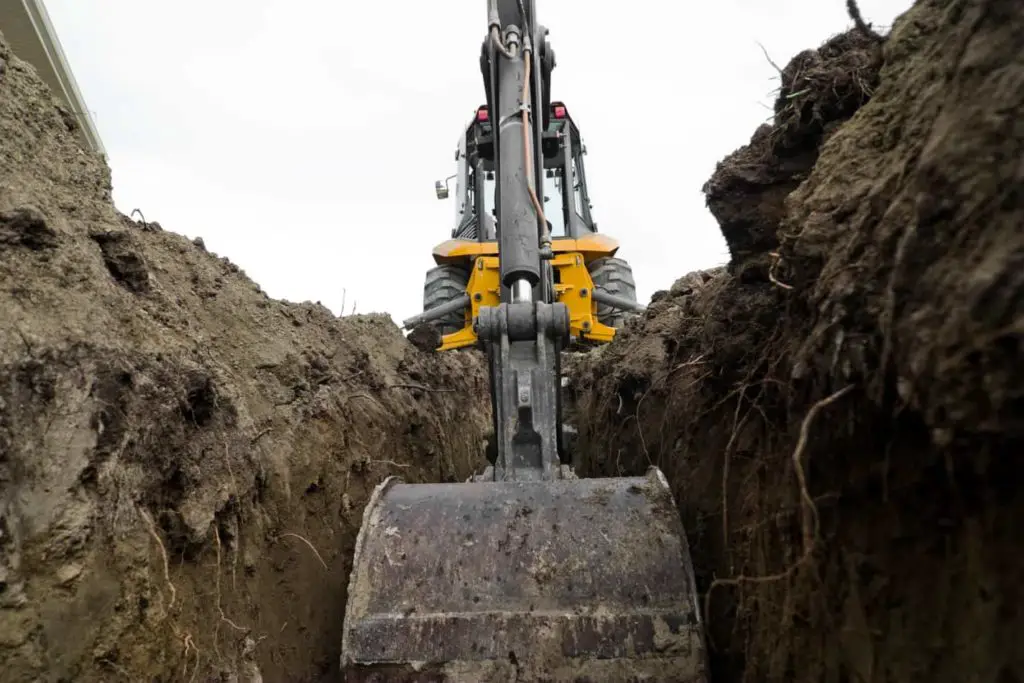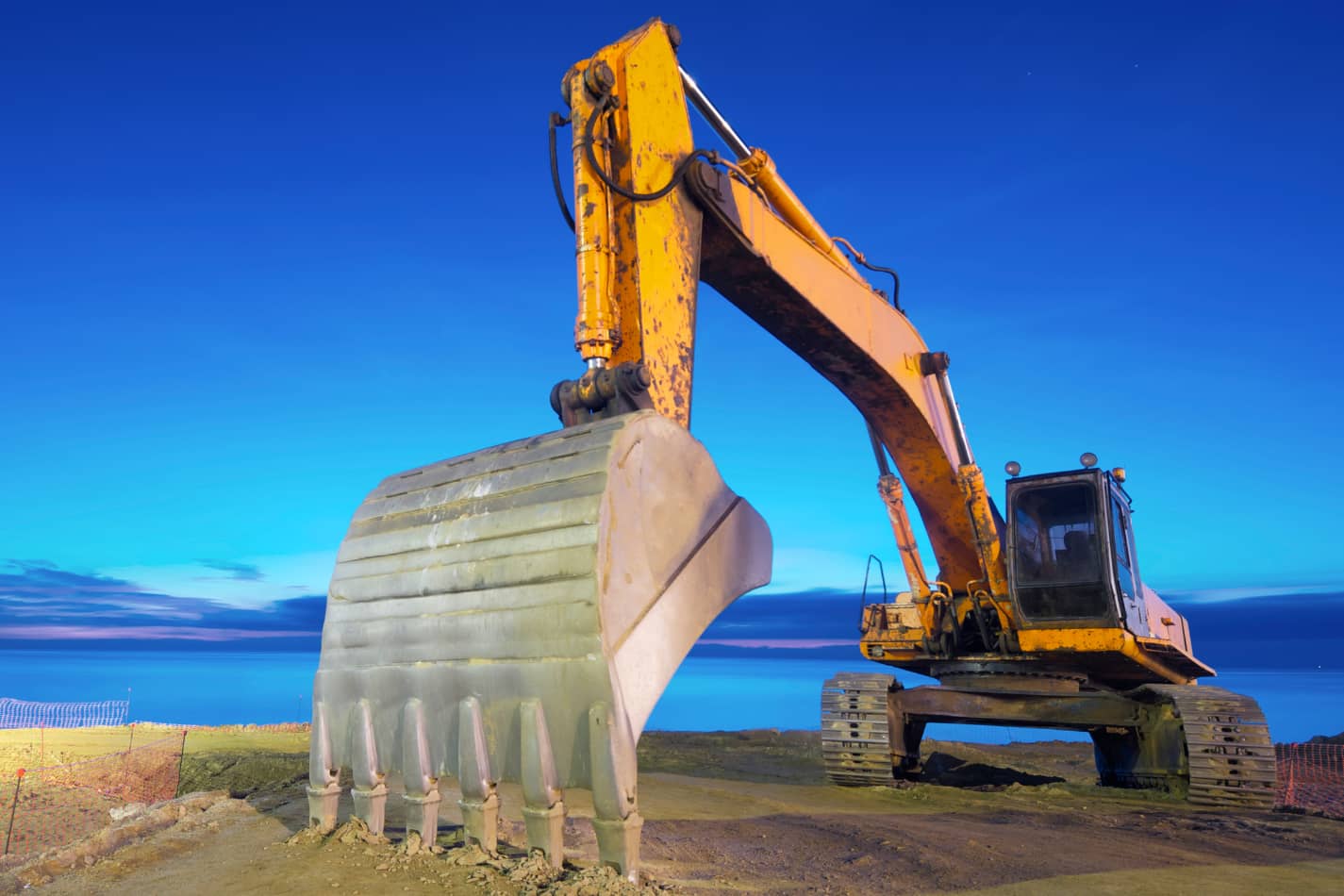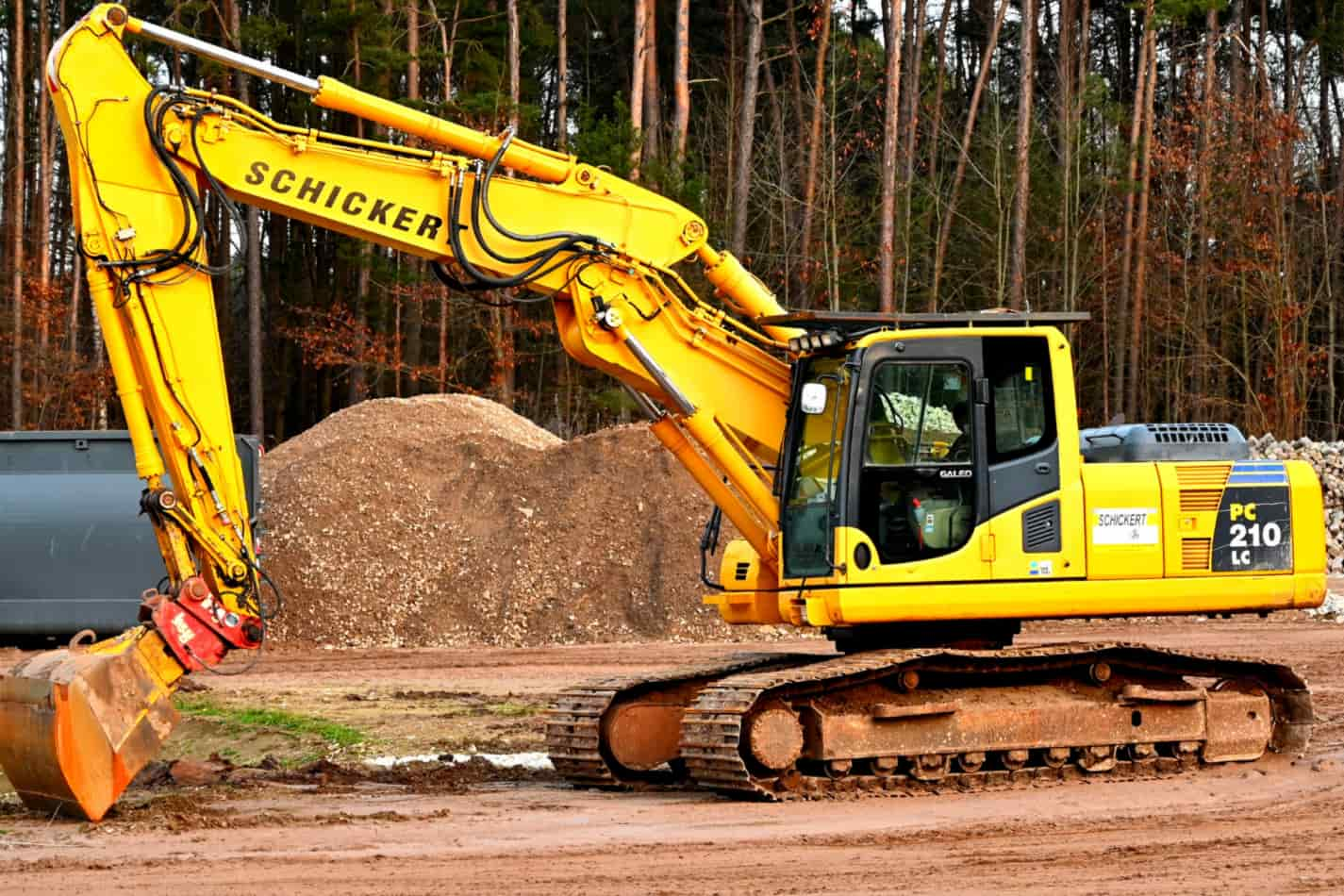Excavation failures are especially unsafe because they can happen fast, restricting the ability of workers (and, in certain situations, those nearby) to escape, especially if the collapse is widespread.
The speed with which an excavation collapses raises the risk of this sort of activity. The repercussions are severe since the falling soil can bury or crush everyone in its path, resulting in death from asphyxia or severe internal trauma. For this reason, safety measures for every excavation activity (including backhoe excavation) are indispensable.
Have you ever wondered how deep a backhoe can dig or how you can safely dig during backhoe excavation? Whatever the case, this write-up got you covered. This article will answer everything you need to know relating to this topic. So read on to find out more!

What are backhoes?
A backhoe is a digger consisting of a digging bucket attached to the end of a two-part articulated arm. The word “backhoe” relates to the bucket’s operation rather than where it is mounted on the vehicle. Unlike a person shoveling, a steam shovel, or a bulldozer, a backhoe digs by dragging soil backward rather than lifting it forwards.
Backhoes feature a tractor center with various attachments, making them ideal on construction sites. A backhoe typically has a loader on one end and a bucket on the other, although additional equipment such as hammers can be added as optional attachments.
Backhoes can travel on roads to get between job sites because of the tractor wheels.
How deep can a backhoe dig?
It is often crucial to consider your backhoe’s dig depth when selecting one. Typically, backhoes are rarely used for jobs that need more than 10 feet of depth, even though most models can dig down to 12 to 16 feet. Those that can dig deeper will have higher horsepower, at least 100 HP, allowing them to dig deeper than 17 feet. Only exceptionally massive backhoes meant for heavy-duty tasks like highway building can deliver such power.
A backhoe’s horsepower refers to the quantity of engine power available, which is proportional to the amount of effort the machine can exert. A harder backhoe capable of carrying bigger loads has more horsepower in the engine.
Other elements in digging include the breakout force, which is the amount of force the arm can exert to move a weight. The stick and boom, the two elements of the arm, each have their own ratings indicating how much weight they can support.
When excavating through or transporting hefty items, these ratings become crucial.
How deep can you dig safely?
The depth to which you may safely dig is usually determined by the sort of backhoe excavator you’re operating. The size and power of the digger will determine how deep the hole can be dug.
Backhoes, for example, dig 12 to 16 feet deep and are ideal for conventional digging jobs or those that do not require extremely deep holes. Excavators are superior for massive foundation digging or other huge, deep spaces.
The safety depth of excavators varies based on their strength and size. Mini electric excavators have a digging depth of only 5 feet and 2 inches. Mini hydraulic excavators are more powerful and may reach 7 to 11 feet, 5 inches in length.
These little excavators do not have as much engine power as their bigger counterparts, with the most powerful model having only 47 horsepower.
Close radius hydraulic excavators require less room in tight spaces and can dig down to a depth of 19 feet, 6 inches, or 22 feet, 3 inches, depending on the type. Horsepower for these vehicles is 90 HP and 55 HP, respectively.
Standard hydraulic excavators are the deepest diggers. These have the most horsepower as well. The most powerful has 243 horsepower and can dig to a depth of 26 feet, 7 inches.
Notes!
Because the stick length differs on all excavators, the depths stated may fluctuate when the stick is changed. Before confirming a digger rental, double-check the details to guarantee the equipment will reach the required depth.
Some factors to consider for safe backhoe excavation.
Generally, several factors will influence what you should pick when choosing the proper backhoe for your job _ Jobsite conditions and digging specifications are two important categories. We’ll break this down into individual aspects.
The equipment required for digging jobs might vary depending on the environment, including weather conditions. Inclement weather or dangerous terrain, for example, will demand a more durable undercarriage that does not sink into the ground.
Working across many locations connected by paved roads or requiring adaptable equipment, on the other hand, may necessitate equipment that can go swiftly over concrete.
- Job environment
To maximize safety in your backhoe excavation, think about any height restrictions in the region. Overhanging trees or wires will reduce the maximum height that can accommodate any equipment in a working space.
Physical ceilings and overhead beams may also limit the height of the equipment utilized when working indoors. So, examine the height of the backhoe employed for the work in circumstances where elevation is limited.
When selecting devices to work in low-height settings, the height of the arm during operation as well as the overall height of the equipment when moving will be important considerations.
- Soil composition
For safety concerns, the digger’s bucket must withstand the weight of the soil or material its carrying regardless of whether a backhoe or excavator is used.
Buckets capable of bearing the biggest weights are required while working with heavy clays or rocks. Lightweight buckets will suffice if you’re moving dry dirt or light sand.
What should I consider when renting a backhoe?
You may also want to look out for the following before deciding on a backhoe.
- Break force: Determines the force your backhoe arm can put into moving a load.
- Dig Depth: Determines how much depth you can cover.
- Horsepower: This will determine the amount of energy that your equipment will keep up.
- Attachments: Increases the number of uses of the equipment. Their versatility and tool options make these devices suitable for a wide variety of jobs, not just digging.
Conclusion
To conclude, while focusing on digging depth for safety concerns, it is also important to choose the right equipment. If the project contains a lot of work, then digging will only play a minor role.
Of course, digging will not be required for all digger activities. In other cases, your backhoe is required to both excavate and move soil or rocks taken from the project.
The equipment you choose, the working condition, and everything else we’ve discussed in this article will not only guarantee safe digging depths but also impact how soon work is completed.
Thanks for reading to the end. We hope this piece of information was helpful!




